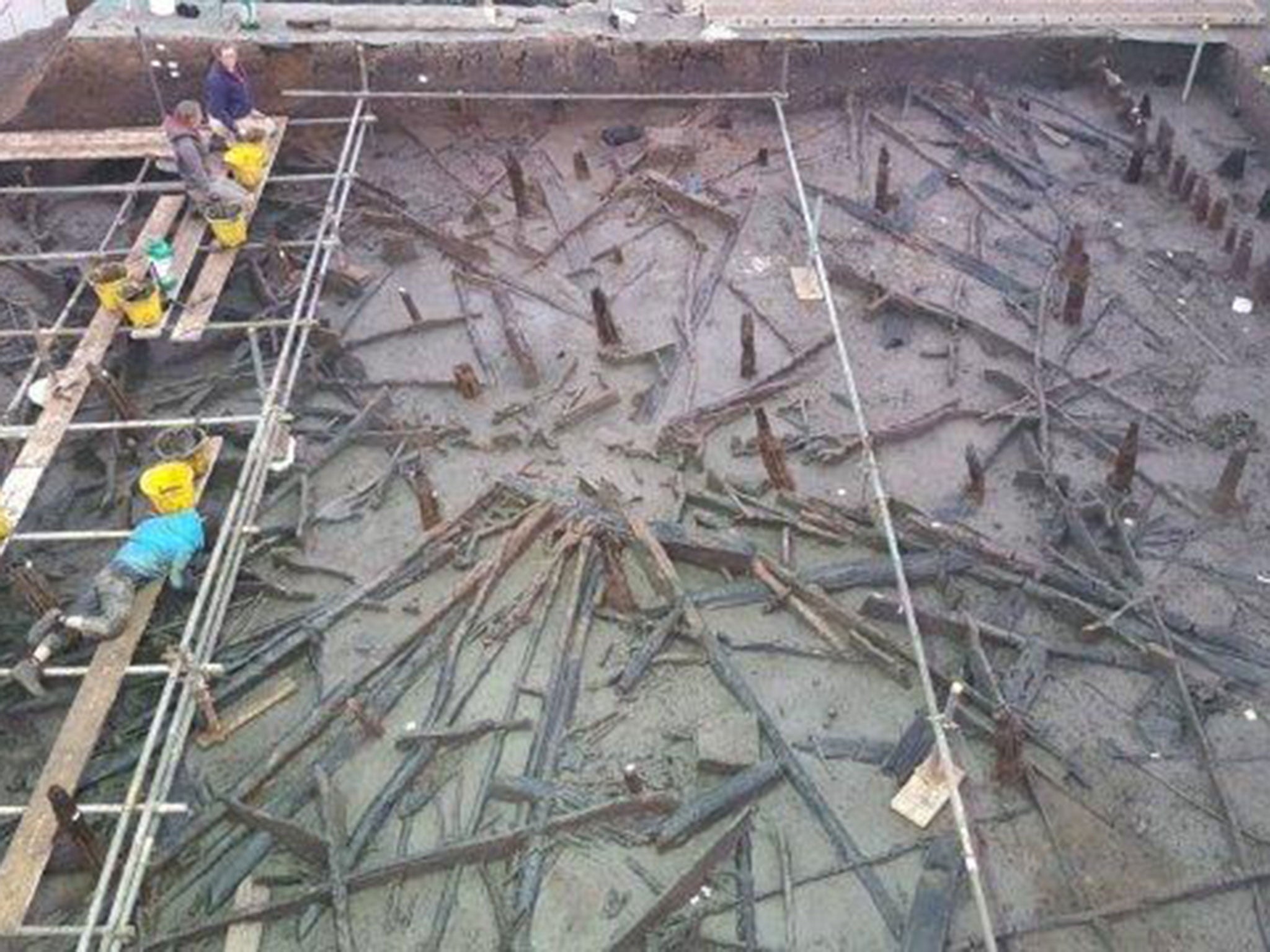Must Farm excavations offer detailed glimpse of life in prehistoric Britain
A site in Cambridgeshire is yielding some of the best preserved Bronze Age artefacts ever found in northern Europe

Extraordinary discoveries in East Anglia are giving archaeologists an unprecedentedly detailed glimpse of life in prehistoric Britain 3,000 years ago.
Excavations near Whittlesey, Cambridgeshire are yielding some of the best preserved Bronze Age artefacts ever found anywhere in northern Europe – including beautifully woven textiles, wooden bowls, fine pottery and bronze tools.
Not only have the archaeologists found literally hundreds of everyday objects – but they have also unearthed some of the houses they were used in.
The remarkable state of preservation of one of the houses is giving prehistorians an unparalleled idea of what domestic architecture was like in Bronze Age Britain.
“It is simply the most complete Bronze Age wooden building ever found in this country,” said David Gibson, the excavation’s project manager.
Almost half the nine metre diameter house has been fully preserved – including much of its roof, walls and floor.
The extraordinary level of preservation of the building is because it collapsed into a river, sunk to the bottom and was fairly rapidly then covered in silt. It then remained waterlogged for some 30 centuries – before being discovered by the archaeologists.
The building was part of a small palisaded settlement built on stilts in the middle of what was, back in the Bronze Age, a 50 metre wide river – probably a former course of the River Nene.
In total the settlement probably had up to six large roundhouses with a total population of between 30 and 50 people.
So far the archaeologists – from the University of Cambridge’s archaeological unit – have found 30 fragments of textile from up to a dozen garments (probably capes and loose shirts). Often decorated with tasseled fringes, all the clothes seem to have been made of plant fibres – especially lime baste, the fibrous material immediately beneath the bark of the lime tree. It’s the largest collection of Bronze Age textiles ever found in Britain.
They have also unearthed at least 20 bronze woodworking tools – including axes, awls and gauges.
The archaeologists at the site – known as Must Farm – believe that the extended family that built and lived in the stilted river settlement was very wealthy.
Pottery found at the site includes the remains of 60 cm tall storage jars and delicate 5 cm high burnished drinking beakers manufactured in northern French style.
Ten very fine blue and green glass beads (the largest collection of late Bronze Age beads ever found in Britain) are chemically very similar to beads from the Balkans, made in the same period.
The inhabitants of the settlement also seem to have eaten very well. Food debris, found by the archaeologists, includes lots of cattle, sheep and pig bones – and nearby they have unearthed well-preserved eel and fish traps. They have also found the remains of pike, smelt and perch - and some of the pots still have food remains in them.
In the Netherlands, Germany and Switzerland, late Bronze Age people sometimes lived in stilted villages on lakes – but the Must Farm site is an ultra-rare example of a stilted river settlement.
It is likely that it was built on the water for defensive reasons – but perhaps also in order to control and potentially even ‘tax’ river traffic.
The four year £1.1 million excavation is being funded by Historic England and a leading UK brick manufacturer, Forterra.
Subscribe to Independent Premium to bookmark this article
Want to bookmark your favourite articles and stories to read or reference later? Start your Independent Premium subscription today.

Join our commenting forum
Join thought-provoking conversations, follow other Independent readers and see their replies